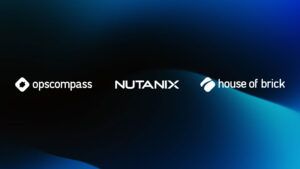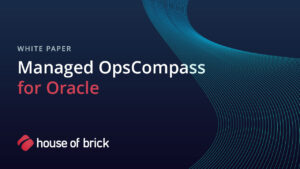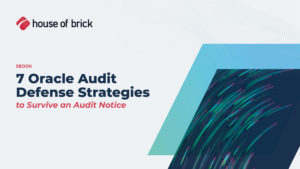For years, House of Brick has helped organizations across industries, including airlines, financial services, and state and local government, navigate complex IT transformations. Our focus has always been on making business-critical databases more secure, cost-efficient, and cloud-ready.
House of Brick combines deep expertise in database performance, licensing strategy, and audit defense with hands-on support for migrations. The result is that clients gain options, clarity, and confidence as they modernize their IT landscapes.
Helping Customers Understand Their Cloud Options
Organizations approach cloud adoption for many reasons:
- Data center evacuations due to relocations or lease terminations.
- Disaster recovery and backup strategies.
- Application and database optimization to improve scalability and efficiency.
Clients often ask: What workloads belong in the cloud, and which services should we use?
The answer depends on business objectives, technical requirements, and long-term strategy.
House of Brick helps enterprises evaluate readiness, identify the right services, and build migration roadmaps that align with both compliance needs and financial goals.
The Reality of “Lift and Shift”
Cloud vendors often promote “lift and shift” migrations as a quick fix to move entire data centers into the cloud. In practice, the reality is more nuanced.
While VMware Cloud on AWS makes virtual machine migrations more approachable, many workloads require careful rebuilding and reconfiguration to function in native cloud services. A true lift-and-shift approach may work in specific situations, but most enterprises benefit from a measured, phased migration strategy.
We encourage clients to think about their business objectives first, whether the goal is cost reduction, improved scalability, or unwinding from vendor lock-in, and then align the migration approach accordingly. For clients considering alternatives, our expertise in Oracle on AWS migrations helps them make informed decisions.
Case Study: State of New Mexico Educational Retirement Board (ERB)
A strong example is the Educational Retirement Board of New Mexico. Facing an Oracle audit, ERB needed to replace its Oracle Database Appliances (ODAs). The organization moved to AWS RDS with “license included” pricing, immediately reducing audit risk and eliminating the burden of excess Oracle licensing.
The migration was not without challenges. Staff had to adapt to new AWS tools and workflows, but with mentoring and support, they quickly became comfortable with the platform. The payoff was significant: a more cost-effective, compliant environment without the overhead of Oracle hardware and licensing risk.
Read the full story here: Case Study: NMERB Migrates to Oracle SE on Amazon RDS, Reduces Support Costs by Over 50%.
Beyond Oracle: Options for SQL Server, Postgres, and Open Source
While much of the cloud conversation focuses on Oracle, many organizations are also evaluating alternatives like Microsoft SQL Server, PostgreSQL, and MySQL.
- SQL Server has matured into a strong enterprise-class option for many business-critical workloads.
- PostgreSQL and other open-source platforms offer flexible, cost-effective solutions for organizations looking to modernize and reduce reliance on proprietary databases.
Modern businesses increasingly want to focus on software and services, not hardware maintenance. That shift makes cloud-native and open-source platforms attractive options, especially for startups or organizations modernizing legacy systems. For those evaluating SQL Server licensing risks, consult with our experts because a SQL Server license assessment could be exactly what you need.
Why Options Matter
The greatest value House of Brick provides is options. Too often, vendors push a one-size-fits-all approach. Instead, clients benefit from understanding:
- What licensing risks exist in their current environment.
- How compliance can be maintained during and after migration.
- Which workloads make sense to lift and shift, refactor, or replace with SaaS.
- What alternatives exist to proprietary databases.
As IT continues its rapid digitization, accelerated by the pandemic, organizations are realizing they do not need to own and maintain every piece of infrastructure. Cloud services, open-source databases, and managed platforms give them choices that did not exist a decade ago. If you’re affected by these trends, reach out to our managed services team powered by Opscompass to help.
Frequently Asked Questions
Database modernization is the process of moving from legacy on-prem systems to modern cloud platforms, often with licensing and compliance optimization.
Modernization improves scalability, reduces costs, mitigates licensing risk, and gives access to cloud-native services.
Options include lift and shift, refactoring for cloud-native services, or replacing legacy systems with open-source or SaaS platforms.
We provide Oracle license assessments, audit defense, and ongoing compliance monitoring during and after migrations.
Yes, SQL Server is highly adaptable to cloud platforms like Azure and AWS. House of Brick helps optimize licensing and compliance.







